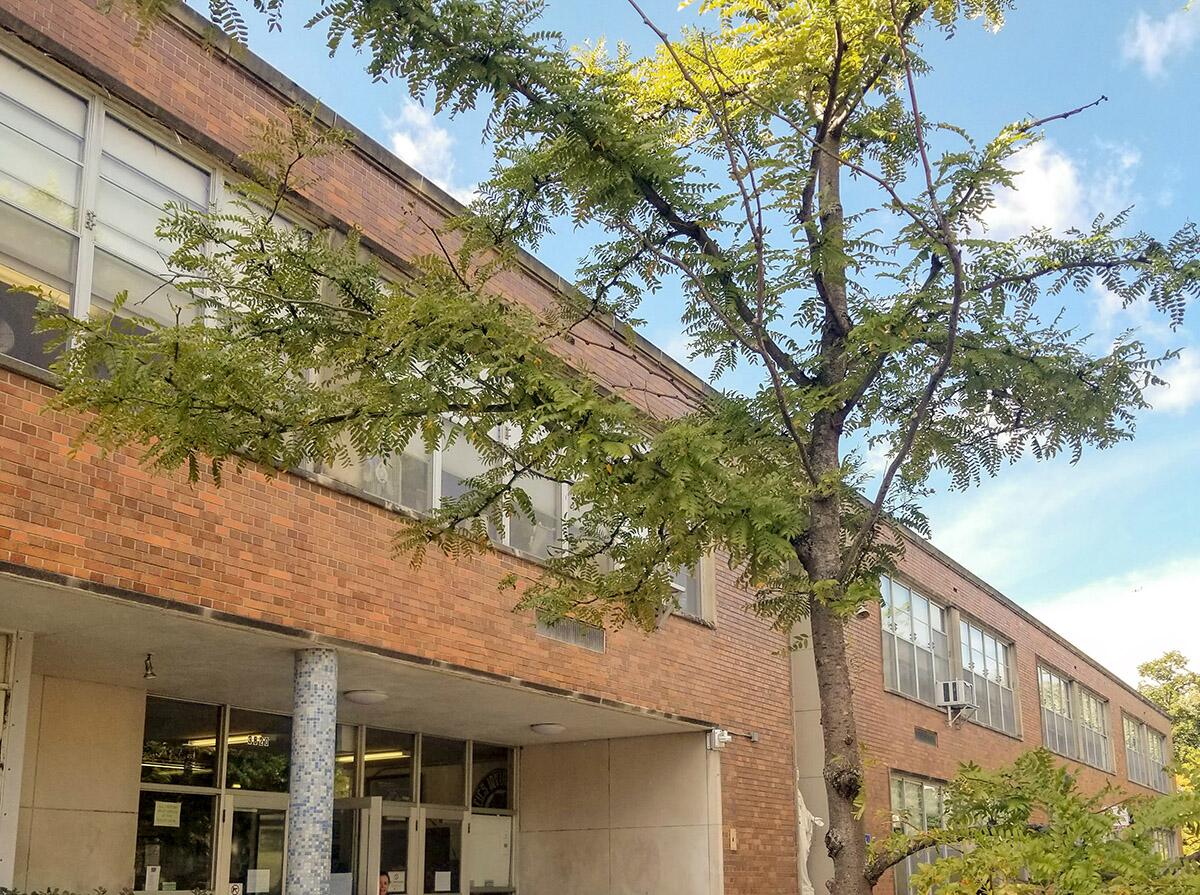Trees set sixth-graders up for success

URBANA, Ill. – The transition to middle school is undeniably tough for many sixth-graders, even in the best of times. Mounting academic demands, along with changes in peer dynamics and the onset of puberty, result in a predictable and sometimes irreversible slump in academic performance.
A new University of Illinois study suggests an unexpected but potentially potent remedy: trees.
“Hundreds of studies show a positive link between contact with nature and learning outcomes, but the studies on nature near schools focus on young children or older learners. We wanted to make sure the same pattern was true in this vulnerable and overlooked population,” says Ming Kuo, associate professor in the Department of Natural Resources and Environmental Sciences at Illinois.
It was. Even after taking a whopping 17 variables into account including student demographics, school resources, and neighborhood characteristics, Kuo and her co-authors found that the more tree cover around a school, the better its standardized test scores in both math and reading. The study included 450 middle schools and nearly 50,000 students in urban, suburban, and rural communities in Washington State.
But why would trees boost test scores? Kuo’s previous work points to a cause-and-effect relationship between nature and learning, with more exposure to nature resulting in improved concentration, greater classroom engagement, and less disruptive behavior. No surprise, then, that greener schools perform better.
Samantha Klein, a master’s student who worked with Kuo on the study, made a point to compare different kinds of vegetation at different distances from schools.
“We wanted to offer concrete guidance to landscape architects, principals, and school boards interested in putting the greenness–achievement link to work, giving them clues as to what should be planted, and where,” Klein says.
Kuo, Klein, and their team were able to differentiate tree cover from grass and shrubs using satellite imagery. “From a practical standpoint, trees cost more to install than grass. So if school districts could get away with just putting grass everywhere, that would be really helpful to know,” Klein explains.
Unfortunately, that wasn’t the case. Trees were far and away more impactful for test scores than other types of vegetation. Still, Kuo emphasizes that compared with other school resource investments planting trees around a schoolyard is still an incredibly cheap and effective intervention. But it could take a sea change before school districts accept school greening when other demands seem so much more pressing.
“I think school boards have always been faced with distributing very limited funds, especially in the poorest areas. They might think that, with all the other pressing needs for funding, school landscaping is the least of their concerns. Little do they suspect that a treeless schoolyard may actually be contributing to poor school performance,” Kuo says.
The satellite images also helped Kuo’s team pinpoint where tree cover mattered most. They compared the importance of greenness in different buffer zones around schools, within 250 meters (around two blocks) and 1000 meters. It turned out trees closer to the schools made all the difference, even when controlling for greenness at farther distances. In other words, even if the larger neighborhood was leafy, students were no better off if the schoolyard wasn’t.
These findings extend previous discoveries in Chicago public schools. Kuo’s work there showed the importance of tree cover near schools in low-income urban districts. But since her current study includes 450 schools across a wide spectrum of populations, she’s confident her results apply more broadly.
“One of the nice things about this study is not only the sheer number of schools and students we’re looking at, but the huge range in Washington State. We’ve captured everything from extremely urban to totally rural areas; rich schools and poor schools; schools with predominately white, Hispanic, Black, or American Indian student bodies; and every level of greenness represented within each of those samples,” Kuo says. “The fact that the greenness-achievement link is true here is encouraging to me. It gives us some confidence that our recommendations apply to a whole variety of schools.”
How does all this apply against the backdrop of remote learning during the COVID-19 pandemic? School greenness won’t make much of a difference if kids aren’t leaving the house. But whether they are physically in school or not, Kuo thinks contact with nature could be critical right now.
“I think the need for trees is more acute at this time. One of the big benefits of greenery, and one of the reasons we think it affects academic achievement, is it's a really potent stress reliever. Kids are aware that things are weird and that a lot of adults are kind of freaked out. And so having access to nature might be even more important than usual.”
The article, “Greening for academic achievement: Prioritizing what to plant and where,” is published in Landscape and Urban Planning [DOI: 10.1016/j.landurbplan.2020.103962]. Authors include Ming Kuo, Samantha Klein, Matthew H.E.M. Browning, and Jaime Zaplatosch. Support for this research was provided by a USDA NIFA McIntire-Stennis capacity grant (ILLU-875-972).
The Department of Natural Resources and Environmental Sciences is in the College of Agricultural, Consumer and Environmental Sciences at the University of Illinois at Urbana-Champaign.